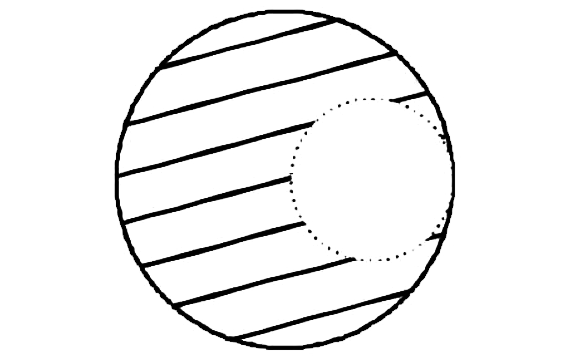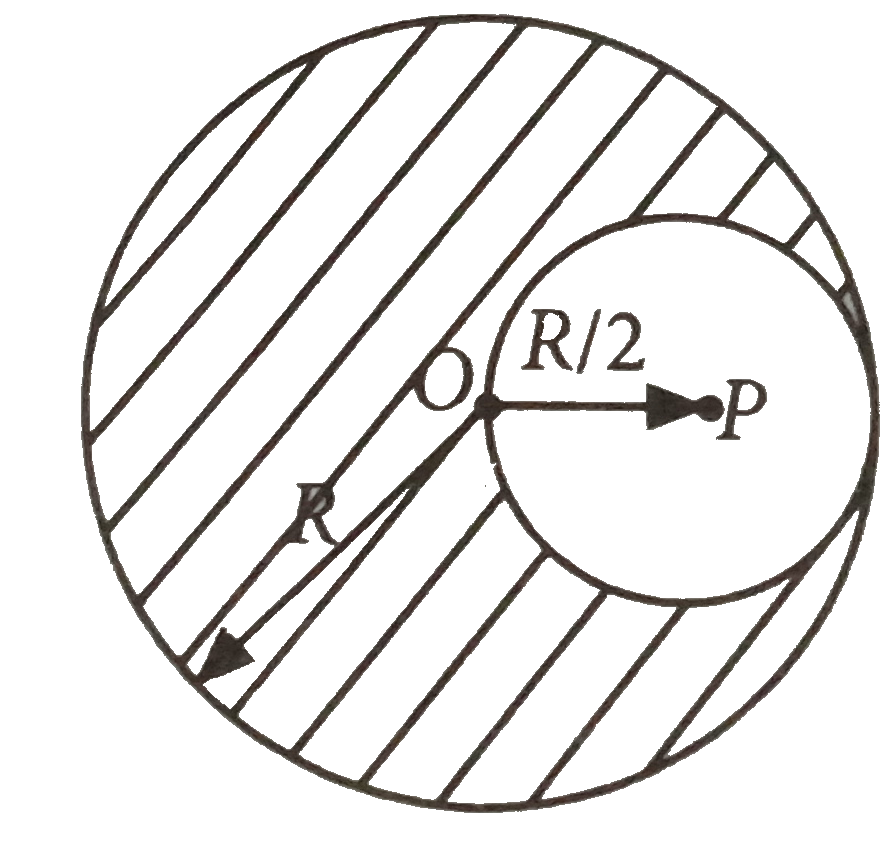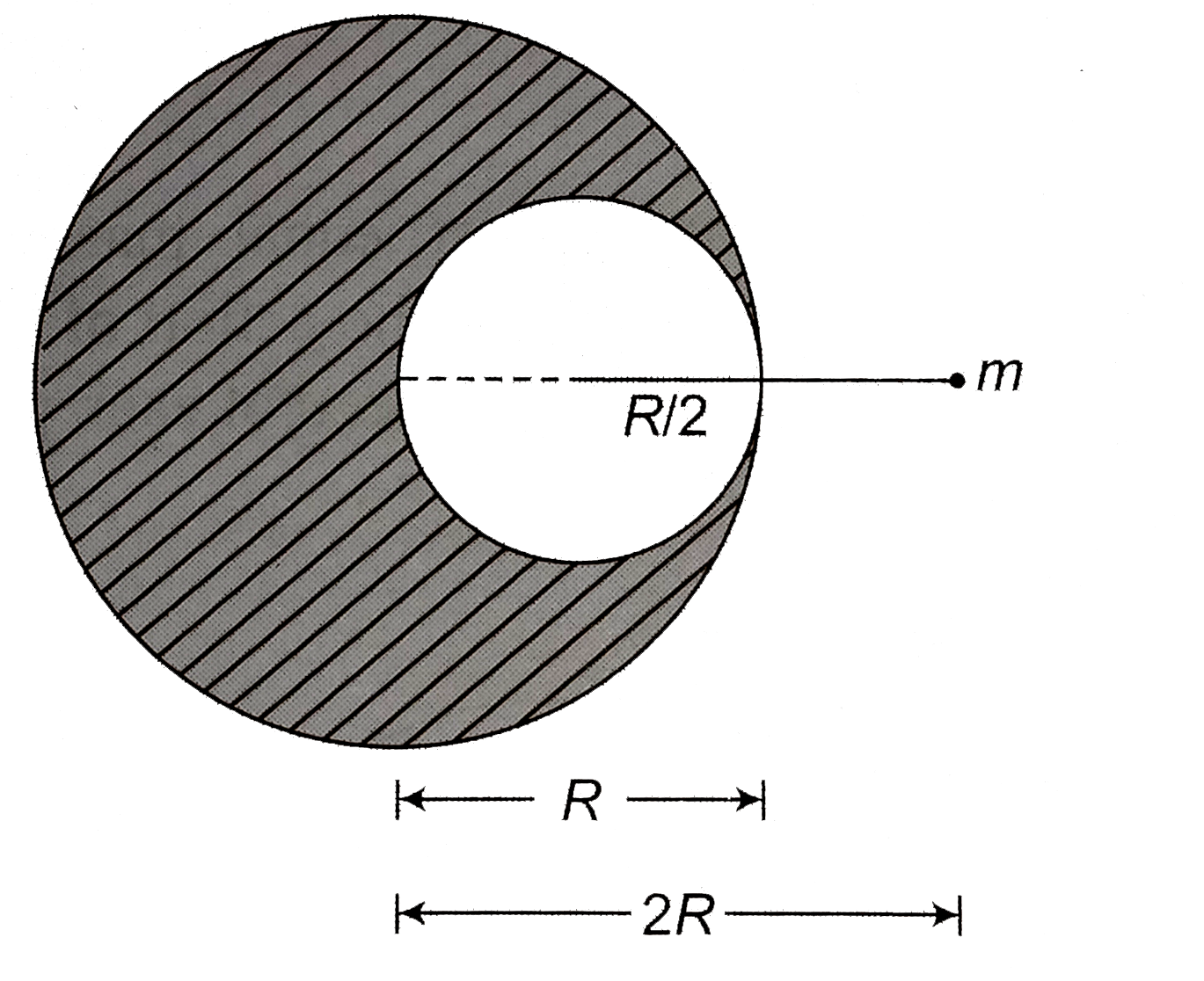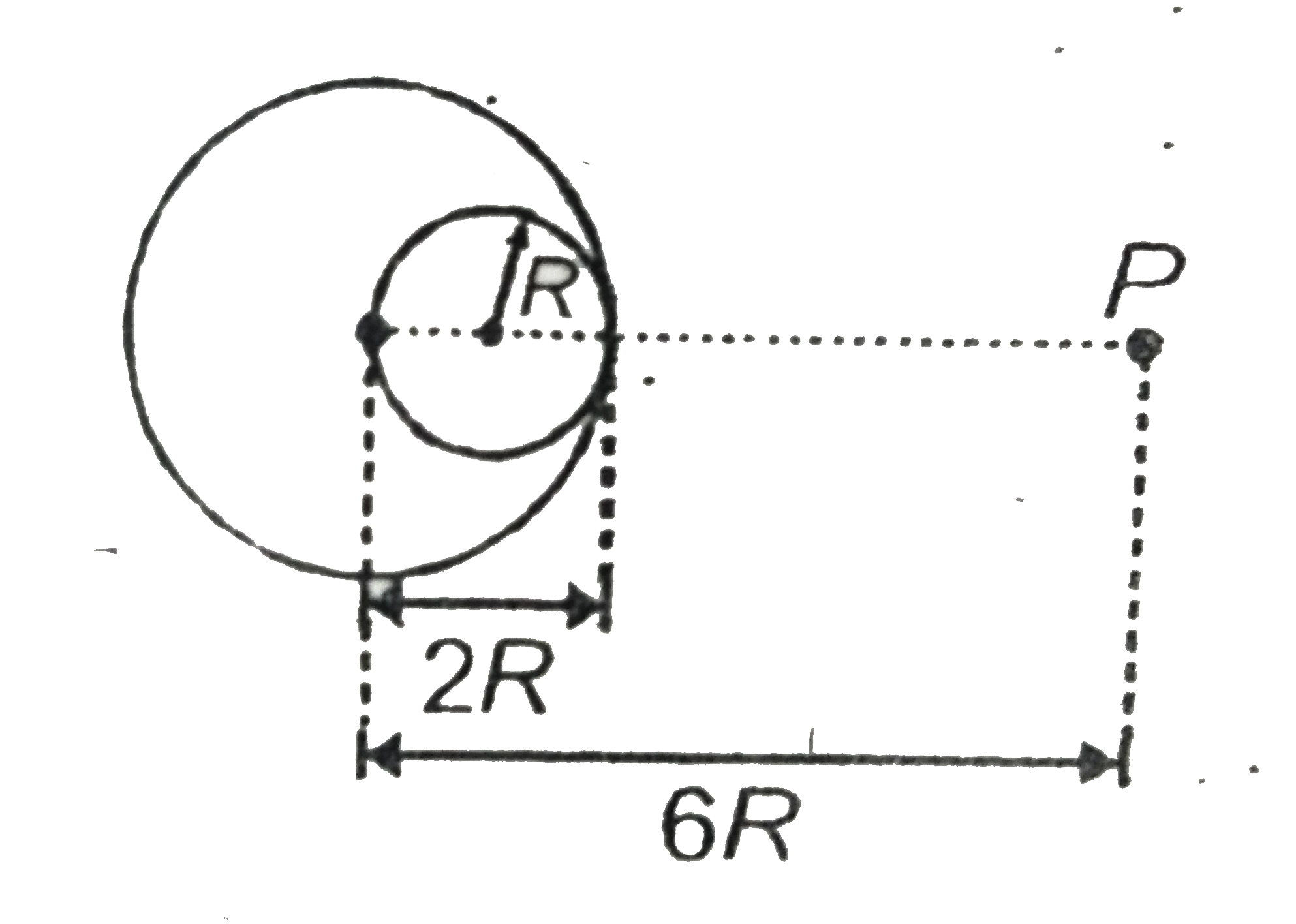From a solid sphere of mass M and radius R, a spherical portion of radius R/2 is removed, as shown in the figure Taking gravitational potential V=0atr=∞, the potential at centre of cavity thus formed is: (G = gravitational constant)

−2GM3R
−2GMR
−GM2R
−GMR
The correct Answer is:D
(d) Potential at Point P (centre of cavity ) before removing the spherical portion,

V1=−GM2R3(3TR2−(R2)2)
=−GM2R3(3R2−R24)=−11GM8R
Mass of spherical portion to be removed,
M'=MV'V=M4π3(R2)34π3R3=M8
Potential at point P due to spherical portion to be removed
V2=−3GM'2R'=−G(M/8)2(T/2)=−3GM8R
∴ Potential at the centre of cavity formed
VP=V1−V2=−11GM8R−(−3GM8R)=−GMR
Topper's Solved these Questions
- BOOK - NCERT FINGERTIPSCHAPTER - GRAVITATIONEXERCISE - Higher Order Thinking Skills10videos
GRAVITATION
- BOOK - NCERT FINGERTIPSCHAPTER - GRAVITATIONEXERCISE - NCERT Exemplar8videos
GRAVITATION
- BOOK - NCERT FINGERTIPSCHAPTER - GRAVITATIONEXERCISE - Weightlessness2videos
GRAVITATION
- BOOK - NCERT FINGERTIPSCHAPTER - KINETIC THEORYEXERCISE - Assertion And Reason10videos
KINETIC THEORY
Similar Questions
From a solid sphere of mass M and radius R, a spherical portion of radiu R2 is removed as shown in the figure. Taking gravitational potential V = 0 at r=∞, the potential at the centre of the cavity thus formed is (G = gravitational constant)
 View Solution
View SolutionFrom a solid sphere of mass M and radius R, a solid sphere of radius R/2 is removed as shown. Find gravitational force on mass m as shown
 View Solution
View Solution
Knowledge Check
- Question 1 - Select One
From a solid sphere of mass M and radius R, a spherical portion of radius R/2 is removed, as shown in the figure Taking gravitational potential V=0atr=∞, the potential at (G = gravitational constatn)
 A−2GM3RB−2GMRC−GM2RD−GMR
A−2GM3RB−2GMRC−GM2RD−GMR - Question 2 - Select One
Inside a uniform sphere of mass M and radius R, a cavity of radius R/3, is made in the sphere as shown :
 AGravitational field inside the cavity is uniformBGravitational field inside the cavity is non-uniformCThe escape velocity of a particle projected from point A is √88GM15RDEscape velocity is defined for earth and particle system only
AGravitational field inside the cavity is uniformBGravitational field inside the cavity is non-uniformCThe escape velocity of a particle projected from point A is √88GM15RDEscape velocity is defined for earth and particle system only - Question 3 - Select One
From a solid sphere of mass M and radius R, a spherical portion of radius R2 is removed. The diameter of the cavity so formed coincides with a radius of the sphere. v0 was the escape speed of a particle projected from the surface of this sphere without cavity. Then the velocity v' that must be given to a particle along O Aso that it can just reach A, starting from within the cavity, is:
AV0Bv02Cv0√2Dv04
A sphere of radius 2R and mas M has a spherical cavity of radius R as shown in the figure. Find the value of gravitational field at a point P at a distance of 6R from centre of the sphere.
 View Solution
View SolutionA particle of mass m is placed at a distance of 4R from the centre of a huge uniform sphere of mass M and radius R. A spherical cavity of diameter R is made in the sphere as shown in the figure. If the gravitational interaction potential energy of the system of mass m and the remaining sphere after making the cavity is λGMm28R. Find the value of λ
 View Solution
View SolutionThree solid spheres of mass M and radius R are placed in contact as shown in figure. Find the potential energy of the system ?
View SolutionA shell of mass M and radius R has point mass m placed at a distance r from its centre. The gravitational potential energy U(r) vs r will be
View SolutionTwo spheres each of mass M and radius R are separated by a distance of r. The gravitational potential at the midpoint of the line joining the centres of the spheres is
View Solution

